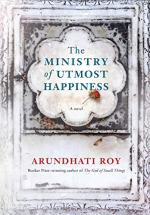|
This section contains 883 words (approx. 3 pages at 400 words per page) |

|
Point of View
The majority of the novel is written from the perspective of third-person omniscient. The narrator is able to both peer inside the heads of both major human protagonists like Anjum as well as to hear the thoughts of small dung beetles. In this sense, the narrative is both indiscriminate and knowledgeable in its treatment of the subject matter. In some sense, the narrative itself is capable of “becoming everything,” as Tilo’s poem in the penultimate chapter suggests is the only way to tell a “shattered story” (439).
At other points, the narrative shifts into the first person. This is true of the two chapters entitled “The Landlord,” which come from the perspective of Biplab Dasgupta. The shift into the first-person allows the reader to go deeper inside Biplab’s mind and to understand how Biplab, as a government bureaucrat, processes and suppresses certain facts about...
|
This section contains 883 words (approx. 3 pages at 400 words per page) |

|




